This spider I found next to the moat near the stone hole. On the coffee shop side Smea Banda Aceh. I was cleaning the gutters nearby, suddenly I saw this spider coming out of a rock hole. Actually I was a little afraid of being bitten by a spider. But because I am a person who really likes animals, then I dare to hold a spider though poisonous. If we love animals, he will not bite us, animals know because we sing it so that he will not bite us. Actually he likes to play in my hands while holding a spider.
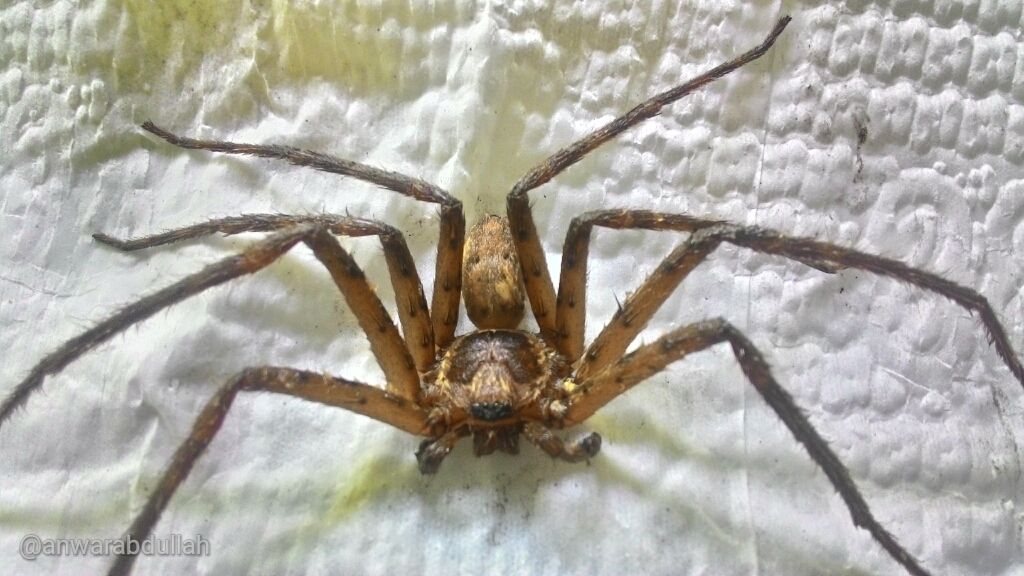

Kingdom: Animalia
Filum: Arthropoda
Kelas: Arachnida
Ordo: Araneae
Spiders, also called spiders, are a kind of (arthropoda) with two body segments, four pairs of legs, no wings, and no chewing mouths. All types of spiders are classified into the order of Araneae; And along with the scorpions , ketonggengs, mites -all eight-legged-were put into the Arachnida class. The field of study of spiders is called arachnologi.
The Araneae is the largest ordo in arachnida and ranked seventh in total species diversity among the entire organismse Ordo.Spiders can be found all over the world on every continent except in Antarctica, and have survived in almost all habitats with the exception of air and sea colonization. As of February 2016, at least 45,800 species and 114 spider tribes have been recorded by taxonomists. However, there has been a division within the scientific community about the way all the tribes are classified because since 1900 there have been more than 20 different classifications have been proposed.
Spiders are predatory animals (carnivores), sometimes even cannibals. Its main prey is insects. Almost all types of spiders, with the exception of about 150 species of the Uloboridae and Holarchaeidae, and the Mesothelae subordo, are capable of injecting through a pair of fangs to an enemy or prey. However, out of tens of thousands of species, only about 200 species have bites that can harm humans.
Not all spiders make a net to catch prey, but all are capable of producing silk threads-a thin but powerful strand of protein fiber-from a gland (called a spinneret) located at the back of its body. These silk fibers are very useful for helping the movement of spiders, swinging from one place to another, trapping the prey, making egg bags, protecting the nest hole, and so on.
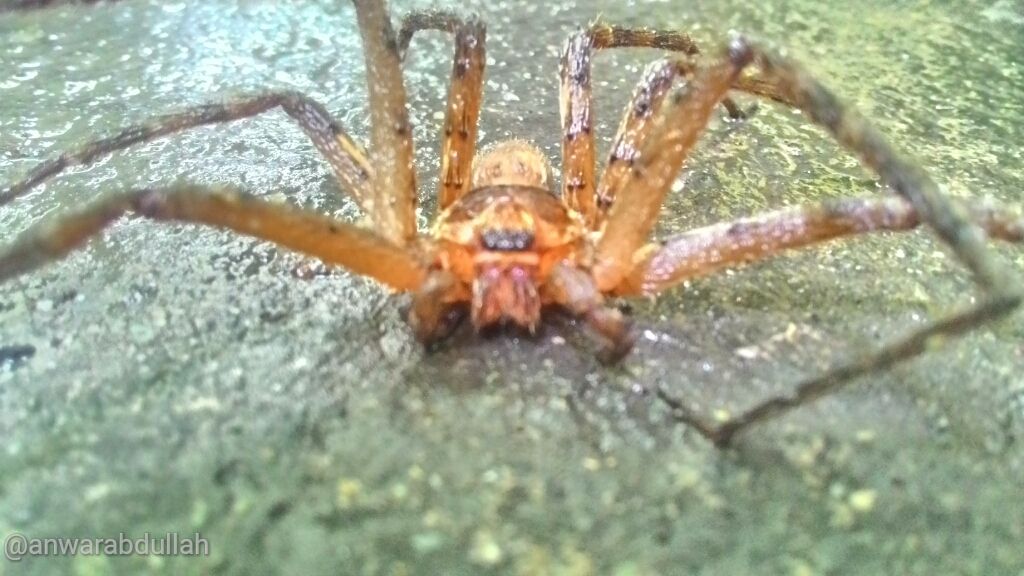
● Morphology
Anatomy of the spider:
(1) four pairs of legs
(2) cephalothorax
(3) opisthosoma
Unlike insects that have three body parts, the spider has only two. The front segment is called the cephalothorax or prosoma, which is actually a combination of the head and the chest (thorax). The back segment is called the abdomen or opisthosoma. Between the cephalothorax and the abdomen there is a thin connector called pedicle or pedicellus.
The cephalothorax attaches four pairs of legs, and one to four pairs of eyes. In addition to a pair of large fanged jaws (called chelicera), there are also a pair or a few hand-like mouth aids called pedipalpus. In some species of spider, pedipalpus in adult male animals enlarges and changes function as a tool in marriage.
Spiders have no mouth or teeth to chew. Instead, the spider's mouth is a sucker to suck the body fluids of its prey.
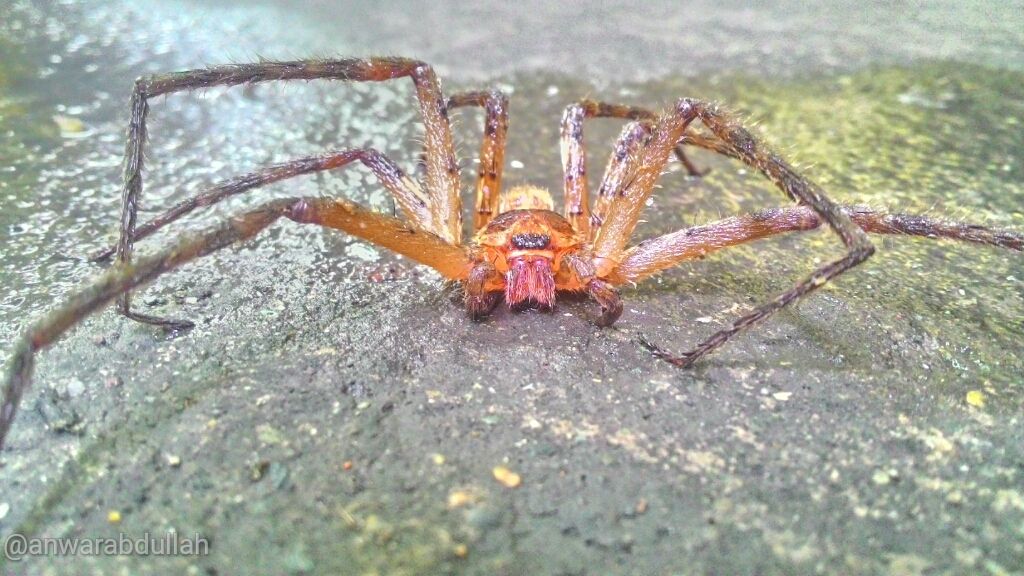
●sense
The eyes of the spider are generally single eyes (single-lensed eyes), and not compound eyes as in insects. Most spiders have poor vision, can not distinguish colors, or are only sensitive to darkness and light. The spider of the cave is even blind. The exception is found in some types of spider hunters who have sharp and good vision, including in recognizing color.
To mark the presence of its prey in general the spider relies on vibration, both on its sail net and on the soil, water, or place it occupies. There are also spiders that can feel the difference in air pressure. The spider's feelings lie in the hairs on his legs.
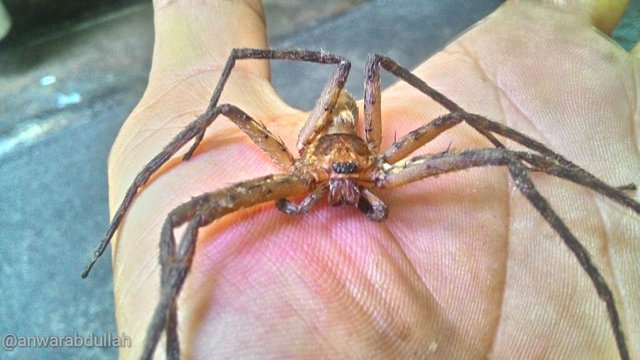
●Predators
Most spiders are indeed predatory prey, waiting for prey to pass nearby while hiding behind leaves, layers of leaves, rocky crevices, or holes in camouflaged soil. Some types have a color pattern that disguises their body on the ground, rock or tree, so there is no need to hide.
Spider weavers (eg members of the Araneidae tribe) make silk webs more or less round in the air, between leaves and twigs, in front of rock fractures, in the corners of buildings, between telephone wires, etc. . This net is sticky, to catch flying insects that become its prey. Once the insect is caught in the net, the spider immediately approaches and jabs its fangs at the prey to paralyze and simultaneously transmit the digestive enzymes into the body of its prey.
Slightly different, spider hunters (such as members of the Lycosidae tribe) are usually more active. Spiders of this type used to explore the trees, between grass, or the surface of the rocky walls to find prey. These spiders can chase and jump to pounce on their prey.
Can be injected spider through the fangs usually simultaneously digest and destroy the inside of the body of prey. Then slowly the body fluids along with the destruction of the internal organs are sucked by the predator. Hours of spiders suck the liquid until the carcass of its prey dries up. Spiders that have strong jaws (chelicera), can more quickly spend their food by destroying and crushing the body of prey with its jaw and fangs. The rest live in the form of small balls that are crushed prey body that has been shrinking.
Some spider weavers have the ability to wrap the body of its prey with the coils of silk threads. This ability is especially useful if the prey has a dangerous self-defense device, such as a bee that has a sting; Or if the spider wants to save its prey for some time while waiting for the preferred moment to enjoy it later.
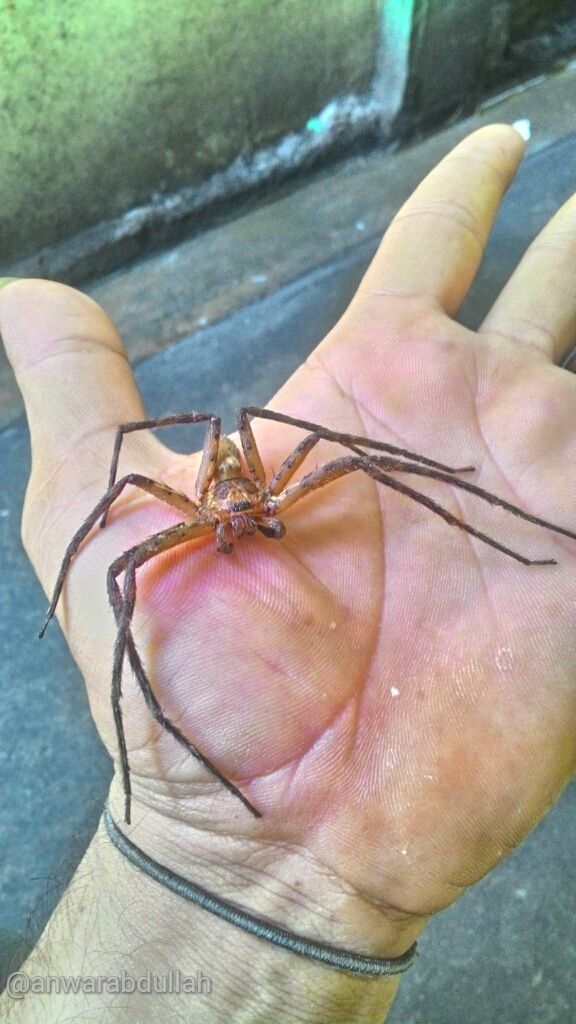
●Diversity Type
As of February 2016, approximately 45,800 species of spiders have been discredited, and classified into 114 tribes. But given that these animals are so diverse, many of them of very small bodies, often hidden in nature, and even many specimens in museums that have not been well described, it is believed that the possibilities of a variety of spider species can be as high as 200,000 species.
The order of spiders is further divided into three major classes in the suborder, namely:
~ Mesothelae, which is a primitive non-venomous spider, with apparent segments of the body; Shows a closer kinship relationship with its ancestor, the arthropod of segments.
~ Mygalomorphae or Orthognatha, is a group of spiders that make burrows, and also that make a trap hole in the ground. Many types of large bodies, such as tarantulas and also lancah maung.
~ Araneomorphae is a group of 'modern' spiders. Most of the spiders encountered belong to this suborder, given that its members consist of 95 tribes and cover approximately 94% of the number of species of spider. The fangs of this group tend to lean forward (rather than erect as in the tarantula group) and are moved in opposite directions such as the claw in biting its prey.
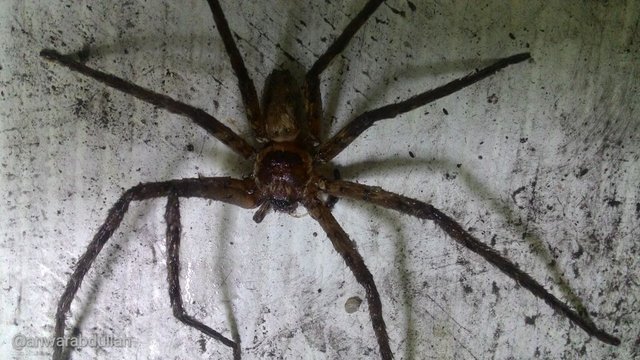
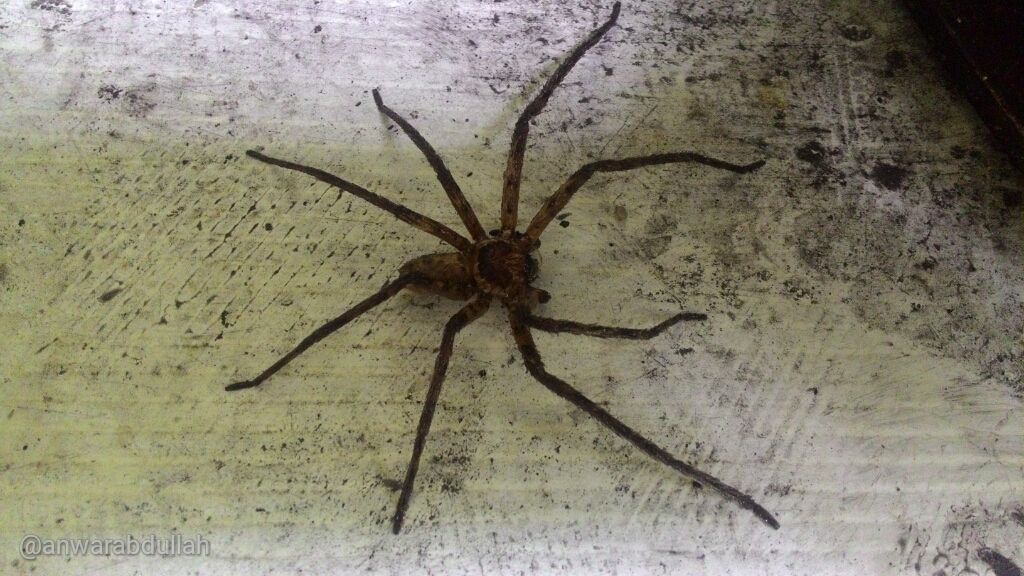
● Reference
1 . ^ a b "Currently valid spider genera and species". World Spider Catalog (dalam bahasa Inggris). Natural History Museum Bern. Diakses tanggal 27-11-2015.
2 . ^ Sebastian, P.A.; Peter, KV, ed. (2009). Spiders of India (dalam bahasa Inggris). Hyderabad, India: Universities Press (India) Private Ltd. ISBN 978-81-7371-641-6.
3 .^ a b "World Spider Catalog" Natural History Museum Bern (dalam bahasa Inggris). 2016. Diakses tanggal 04-02-2016.
4 . ^ Foelix, Rainer F. (1996). Biology of Spiders (dalam bahasa Inggris). New York, A.S.: Oxford University Press. p. 3. ISBN 0-19-509593-6.
##●External links
~ (Inggris) Spiders di Proyek Direktori Terbuka
~ (Inggris) Cerita dengan gambar mengenai laba-laba pelompat Aelurillus v-insignitus
~ Laba-laba di Encyclopedia of Life
~ Laba-laba berburu di YouTube
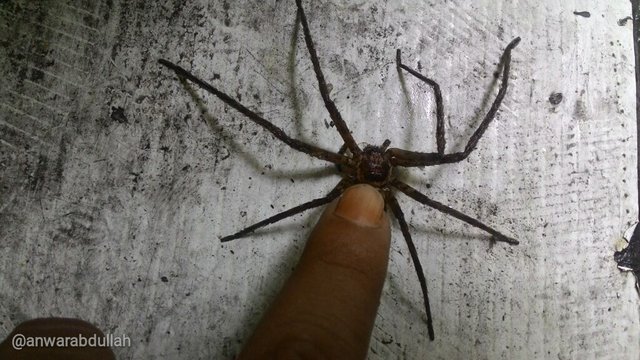
Photo shot from Aceh's nature in Banda Aceh
Taken with the smartphone camera of Asus Toof

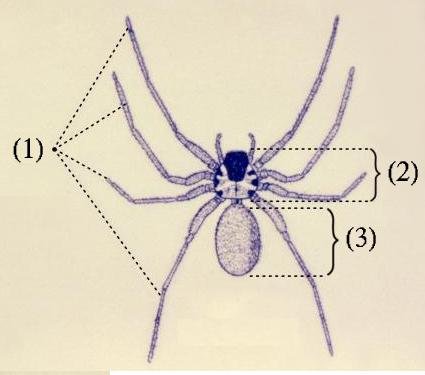
Oh man that looks creepy. Nice pictures though.
Downvoting a post can decrease pending rewards and make it less visible. Common reasons:
Submit
Thanks you @duckmast3r
Downvoting a post can decrease pending rewards and make it less visible. Common reasons:
Submit
Nice post 👍👍👍
Downvoting a post can decrease pending rewards and make it less visible. Common reasons:
Submit
Thanks you my friend @nasrud
Downvoting a post can decrease pending rewards and make it less visible. Common reasons:
Submit
You are welcome
Downvoting a post can decrease pending rewards and make it less visible. Common reasons:
Submit
Congratulations! This post has been upvoted from the communal account, @minnowsupport, by anwarabdullah from the Minnow Support Project. It's a witness project run by aggroed, ausbitbank, teamsteem, theprophet0, someguy123, neoxian, followbtcnews/crimsonclad, and netuoso. The goal is to help Steemit grow by supporting Minnows and creating a social network. Please find us in the Peace, Abundance, and Liberty Network (PALnet) Discord Channel. It's a completely public and open space to all members of the Steemit community who voluntarily choose to be there.
Downvoting a post can decrease pending rewards and make it less visible. Common reasons:
Submit